Exclusive interview with Dr Reinhard Opitz - German WW2 veteran and one of the few pilots to have flown the rocket-powered Messerschmitt Me 163 fighter.
In WW2, the rocket-powered, tailless Messerschmitt Me163 Komet interceptor was on the leading edge of aerospace technology — its mission, a last-ditch German effort to defend the Reich.
Last year, on a visit organised by the RAeS Munich Branch, we had the opportunity to interview one of the few surviving Me163 pilots, Dr Reinhard Opitz, on his experiences in flying this rare aircraft, within the apt surroundings of the Messerschmitt Museum at EADS/Cassidian Manching. The Museum, on the EADS facility, is home to the EADS Heritage Flight, a unique collection showcasing part of German aeronautical history.
The Aerospace Professional: What made you become a pilot?
Reinhard Opitz: I started my pilot experience in 1938 with glider education. In 1940 I had a private pilots’ licence for gliders.
TAP: Can you tell me about your initial training, where did it take place?
RO: I started training in Berlin in 1941. The Luftwaffe unit, the Luftkriegschule, was part of the training to pilot and to officer. I learned to be an air force officer. I became a Leutnant, the first step, in 1943.
TAP: What was your operational history before joining JG400?
RO: After the basic training for an air force pilot, I changed to special training for fighter pilots. My first combat type was the Bf110. I finished this time, after nearly nine months, as instructor for fighter training. This was in the south of Germany, not far from here. Bad Aibling was the station for fighter training. A very small airfield but very nice. This 110 time finished in June or July ’44, and all the pilots went on to the Messerschmitt Bf109.
TAP: Did you join JG400 as a volunteer or were you posted?
RO: Posted, yes. Today I believe that my glider experience before I became a soldier was one of the reasons I was sent to the 163, because the Luftwaffe’s leading people at that time were looking for pilots with glider experience.
TAP: What was your first thought when the concept of a ‘rocket fighter’ was explained? Did you think it would be successful or did you think it was a suicide mission?
RO: That’s a very good question because, as you understand, the situation in Germany at that time, was that we had not enough aircraft with sufficient power and speed and many pilots were interested in changing to this modern type of aircraft.
TAP: What about other pilots in JG400 — were they very experienced or not?
RO: It was a problem. Mostly very young pilots with experience but without enough experience. By that time I had nearly 20-25 combats against B-17s, American daylight bombers, and was one of a small number of pilots that came from different wings with a little combat experience. Everyone else came from glider units and they had no experience. It was a big problem.
TAP: So they went straight from gliders to rocket fighters then?
RO: Yes.
TAP: What did the Me163, conversion to type, training consist of? How did they train you to fly it?
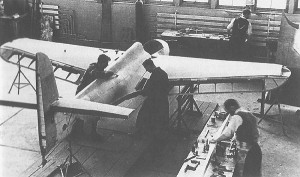
Me163 training involved using a Habicht glider with cut-down wingspan to accustom trainees to high-speed landings.
RO: Normally we started with the glider. We had at that time the Habicht glider from before the war and this Harbicht had a span of 13.6m. A different version of this glider, they cut the span down to 6m. You had a very high speed for landing with this. It was the steps to go faster and faster with engine for the approach and landing. It was the biggest problem for all the new pilots for the Me163. We had no engine, no throttle. You had to be right on the spot — if you were too fast, then the airfield was too small, if you were too slow, you didn’t reach it. So it was a one-shot.
TAP: How many glider flights did you have before they put you in the powered version?
RO: 20 or 30, I don’t know. It was different depending on the quality of the pilots. One of the pilots came with a low number of flights, another came with 50. It was not possible to make a normal landing (training) system. A big problem was that the Me163 was very fast without the engine because you came from 3,000m with 500/600km/h speed and now, for landing, you must reduce your speed to 225/230km/h for approach. The Me163 finished the approach with 180/190km/h without wheels. We had no wheels — just a skid.
TAP: What was your impression of your first powered flight in the Komet?
RO: Fascinating! We had many accidents on start and landing. Everybody was happy with a good end to the flight.
TAP: Where were you based? Did you ever land away from the main base — were there alternate bases to recover to?
RO: The airfield was Brandis, east of Leipzig. But every time to the main base. Later on we had our own radar system, only for our unit, if we had clouds (at that time we had 50% clouds). So with the help of radar we flew back to the base.
TAP: What were the safety precautions involved before you even got in the cockpit? Komet pilots wore a special suit — can you tell me about that?
RO: Yes — but another thing — before all the test flights and all the flights for training before powered flight, we used a Bf110 towing the 163 behind. For the first rocket start we used only half the fuel because under war conditions we had a shorter length to go up. We had no problem with the handling of the rocket engine — the flight would go up until the point when the fuel was empty, some 4,500 to 5,000m, and after this landing. Every time, for rocket-powered starts, we had a special suit to protect us against the T-Stoff — it was hydrogen peroxide. It was very corrosive — if you got some material on your body it would burn the skin.
TAP: The fuels were extremely volatile — did you have many non-flying accidents on the ground? Or handling and storage?
RO: No I don’t remember. But after landing the problem was, we used for the flights (take-offs) for the 163 only solid runways. It was impossible to do this on grass. But for landing with the 163 you must have grass because it’s impossible to land on concrete. Heavy accidents were all during the landing, usually by overrunning the field, being too fast or slippery grass. And when the aircraft flipped over it normally caused some breakage, leakage in the pipes and the residual fuel then tended to blow up.
TAP: What was the baling out procedure for getting out of a Komet in combat? How would you have slowed down to bale out?
RO: The canopy was very difficult to open in flight.
TAP: So once you were in, you were in for the ride?
RO: Yes.
TAP: What was the highest speed you saw when flying the Komet?
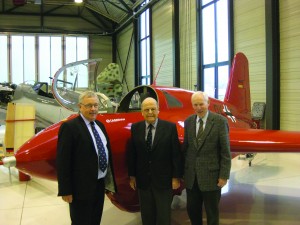
From left, Simon Luxmoore, RAeS Chief Executive, Dr Reinhard Opitz and Prof. Gero Madelung, President of the RAeS Munich Branch and Chairman of the Museum
RO: The 163 with full equipment, with two cannons with 60 rounds the weight was nearly 4.3/4.4 tonnes. From take-off to height the initial climb was more than 1,000m. The speed for climbing was 700km/h.
TAP: Would a Komet have ever gone through the sound barrier?
RO: The sound barrier was unknown to us pilots. Nobody could say what would happen. We had, on the panel, the airspeed indicator and at 950km/h was a red point! No more than this! Today, in modern aircraft, you have airspeed indicators in relation to altitude — we hadn’t this. Some of our pilots (and myself also) had the first indications of supersonic flight. The aircraft rolled or made other manoeuvres than what you intended to do. The only way to stop this was to stop the engine and two or three seconds later you had normal flying conditions.
TAP: How many missions in the 163 did you fly? How many of these were combat — as opposed to training?
RO: I flew no combat missions in the 163. We had two squadrons. In Brandis they flew 15-20 combat missions but my unit was used to build up the organisation for maintenance and so on. The main purpose of my squadron was to build up the logistics and all the support, so they did a lot of training flights but this depended on the availability of engines and fuel.
TAP: So, for a combat mission, what method did the Komet pilots use to attack an enemy bomber formation? Would you keep the engine on all the time?
RO: The theoretical idea was to go 1,000/2,000m higher than the target and make the attack without power in a fast glide. I believe no more than ten victories were claimed by the 163 and all these came from above the B-17 or B-24 Liberator.
TAP: As a pure flying machine how did the Komet handle in flight? You’ve flown the Bf110, Piper Supercub, gliders — how does it compare?
RO: This aircraft at different speeds was quite normal to fly. Very nice to fly. It was very balanced throughout the speed range and people that had a lot of experience said it was one of the best balanced types they had the opportunity to fly.
TAP: Do you think that had it entered service earlier it could have made a difference countering massed bomber attacks?
RO: No. I don’t think so because from the middle of ’44 there was so much momentum behind the US forces. I know that some people think that it would have but I doubt this very much.
TAP: How did the war end for you?
RO: On 8 May 1945 at Husum in North Germany, the first British soldiers came to this airfield, four days after the end of the war. Two or three days later I saw the first Spitfire 21. I remember exactly — on this airfield one week later came a British night bomber a Halifax (or Lancaster), and a very highly decorated pilot (a Wing Commander from Farnborough) came to me — wanting a wrench to check for oil defects below one its engines. After that we packed up all the 20 or 21 Me163s for transport to England.
TAP: These were high technology, very advanced fighters, why were they not destroyed so no-one else could get the advances you had made?
RO: Because the new German leader, Dönitz, who succeeded Hitler, had given out an order that we should stop destroying. The second thing was, among the troops, many had the hope that the Americans and British would join the Germans in fighting against the Russians. It was a very critical situation for us because nobody knows what would have happened.
TAP: Had the Komet been developed further do you think it could have been turned into a research aircraft like the X-1/X-15?
RO: No, the Me163 was a very interesting test object — but this aircraft was far from normal handling and operations. Remember that, after the flight ended, it was impossible to move the aircraft from the runway to the hangar without special equipment. You must have three people for one transport — and it would be impossible to do this under combat conditions.
TAP: Tell me about your post-war flying — you continued gliding?
RO: It was not possible to fly, to glide in Germany until 1952. I had a friend, a gliding instructor, and had two flights with him and worked towards my pilot’s licence. The first powered aircraft flight for me was in 1956 with a British Auster and, after this time, I had a private pilots’ licence for many years and I did this only just for fun!
TAP: You’ve had an amazing career. What message would you give to young people thinking of a career in aerospace?
RO: It is a very difficult question because the development will be to fly without pilots in the near future!
TAP: Thank very much for your time!
Thanks also to the RAeS Munich Branch and EADS for organising this visit, and for arranging the interview with Dr Opitz.
from the Royal Aeronautical Society
Do more:
REQUEST: a subscription to Royal Aeronautical Society Publications
APPLY: to become a member of the Royal Aeronautical Society
MORE: about Royal Aeronautical Society publications
Do you know somebody that this would appeal to? Share it on your favourite services below
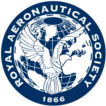


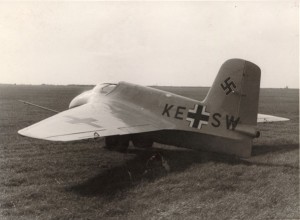
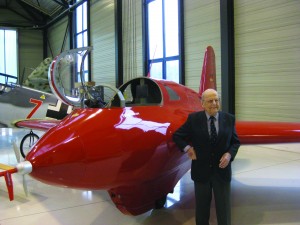
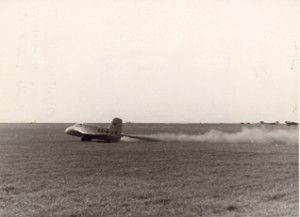
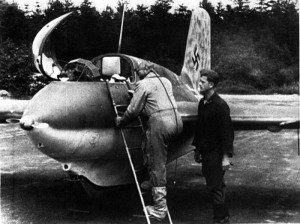
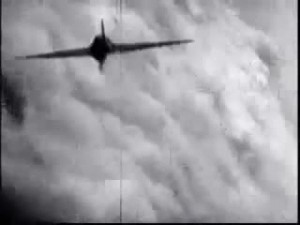
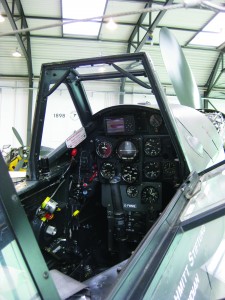
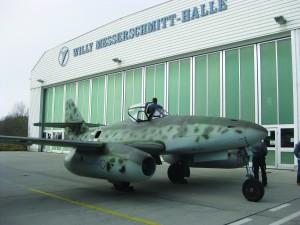
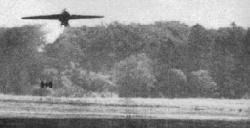


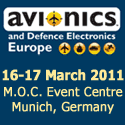


04.02.2011
Very interesting interview, with the gentleman. Sorry it was not taken futher. We have the hardware, but so little, software. On the German inter-war gliding, and soring.